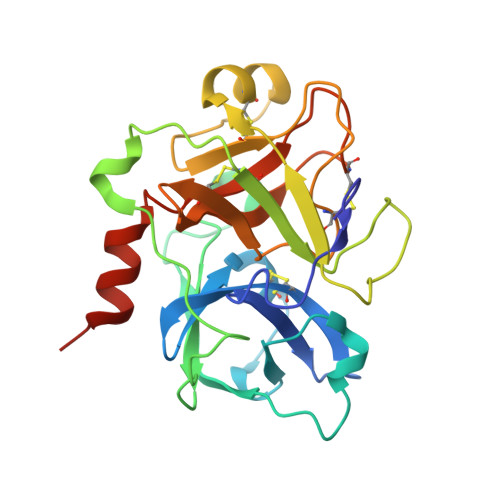Discovery of a Potent Parenterally Administered Factor XIa Inhibitor with Hydroxyquinolin-2(1H)-one as the P2' Moiety.
Hu, Z., Wong, P.C., Gilligan, P.J., Han, W., Pabbisetty, K.B., Bozarth, J.M., Crain, E.J., Harper, T., Luettgen, J.M., Myers, J.E., Ramamurthy, V., Rossi, K.A., Sheriff, S., Watson, C.A., Wei, A., Zheng, J.J., Seiffert, D.A., Wexler, R.R., Quan, M.L.(2015) ACS Med Chem Lett 6: 590-595
- PubMed: 26005539
- DOI: https://doi.org/10.1021/acsmedchemlett.5b00066
- Primary Citation of Related Structures:
4Y8X, 4Y8Y, 4Y8Z - PubMed Abstract:
Structure-activity relationship optimization of phenylalanine P1' and P2' regions with a phenylimidazole core resulted in a series of potent FXIa inhibitors. Introducing 4-hydroxyquinolin-2-one as the P2' group enhanced FXIa affinity and metabolic stability. Incorporation of an N-methyl piperazine amide group to replace the phenylalanine improved both FXIa potency and aqueous solubility. Combination of the optimization led to the discovery of FXIa inhibitor 13 with a FXIa K i of 0.04 nM and an aPTT EC2x of 1.0 μM. Dose-dependent efficacy (EC50 of 0.53 μM) was achieved in the rabbit ECAT model with minimal bleeding time prolongation.
Organizational Affiliation:
Research and Development, Bristol-Myers Squibb , Princeton, New Jersey 08543, United States.

















